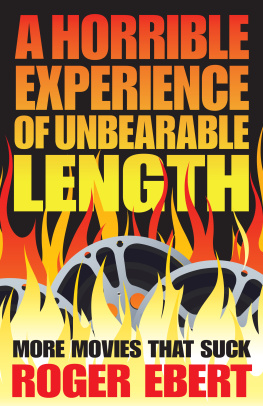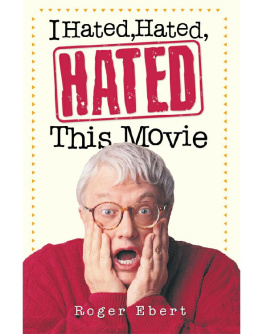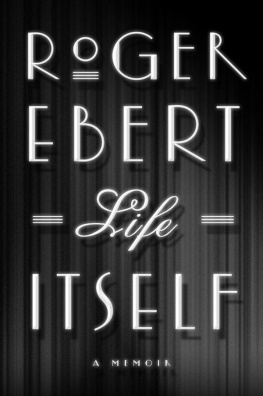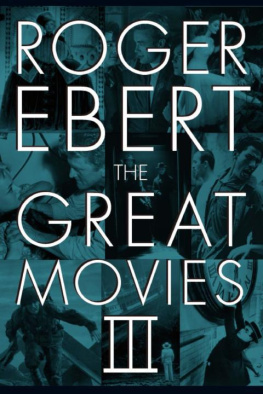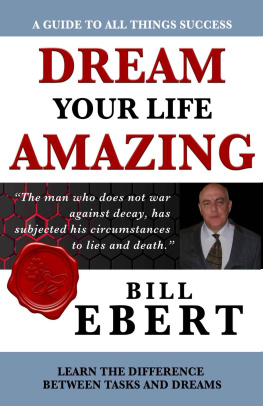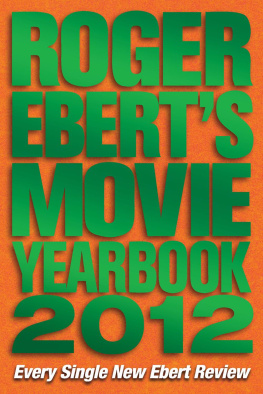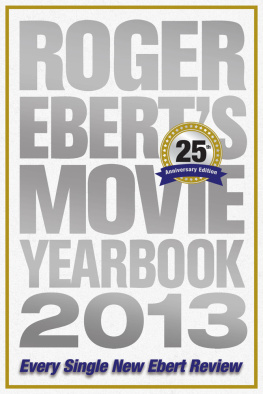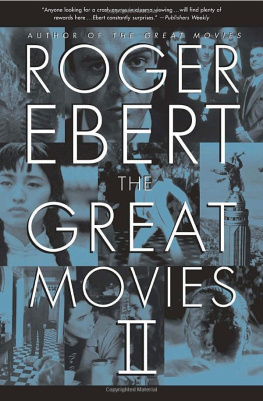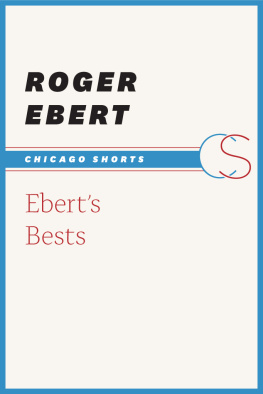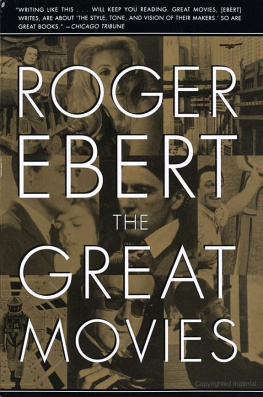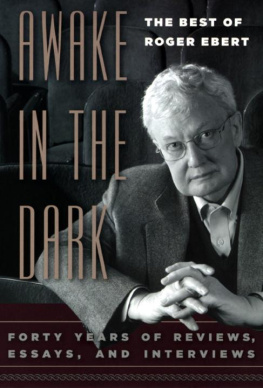Ebert - The great movies. 3
Here you can read online Ebert - The great movies. 3 full text of the book (entire story) in english for free. Download pdf and epub, get meaning, cover and reviews about this ebook. City: Chicago, London, year: 2011, publisher: Three Rivers Press;The University of Chicago Press, genre: Detective and thriller. Description of the work, (preface) as well as reviews are available. Best literature library LitArk.com created for fans of good reading and offers a wide selection of genres:
Romance novel
Science fiction
Adventure
Detective
Science
History
Home and family
Prose
Art
Politics
Computer
Non-fiction
Religion
Business
Children
Humor
Choose a favorite category and find really read worthwhile books. Enjoy immersion in the world of imagination, feel the emotions of the characters or learn something new for yourself, make an fascinating discovery.
- Book:The great movies. 3
- Author:
- Publisher:Three Rivers Press;The University of Chicago Press
- Genre:
- Year:2011
- City:Chicago, London
- Rating:4 / 5
- Favourites:Add to favourites
- Your mark:
The great movies. 3: summary, description and annotation
We offer to read an annotation, description, summary or preface (depends on what the author of the book "The great movies. 3" wrote himself). If you haven't found the necessary information about the book — write in the comments, we will try to find it.
From Americas most trusted and best-known film critic, one hundred brilliant essays on the films that define for him cinematic greatness.
For the past five years Roger Ebert, the famed film writer and critic, has been writing biweekly essays for a feature called The Great Movies, in which he offers a fresh and fervent appreciation of a great film. The Great Movies collects one hundred of these essays, each one of them a gem of critical appreciation and an amalgam of love, analysis, and history that will send readers back to that film with a fresh set of eyes and renewed enthusiasmor perhaps to an avid first-time viewing. Eberts selections range widely across genres, periods, and nationalities, and from the highest achievements in film art to justly beloved and wildly successful popular entertainments. Roger Ebert manages in these essays to combine a truly populist appreciation for our most important form of popular art with a scholars erudition and depth of knowledge and a sure aesthetic sense. Wonderfully enhanced by stills selected by Mary Corliss, film curator at the Museum of Modern Art, The Great Movies is a treasure trove for film lovers of all persuasions, an unrivaled guide for viewers, and a book to return to again and again.
The Great Movies includes: All About Eve Bonnie and Clyde Casablanca Citizen Kane The Godfather Jaws La Dolce Vita Metropolis On the Waterfront Psycho The Seventh Seal Sweet Smell of Success Taxi Driver The Third Man The Wizard of Oz and eighty-five more films.
From the Hardcover edition.
Amazon.com ReviewIf Pauline Kael popularized movie love, Roger Ebert is the eloquent Valentino of cinephiles. This invaluable volume gathers 100 of the Pulitzer winners mini-essays composed since 1997, revised and updated, to form a love letter that could only spring from decades of devotion. A feat of superlative analysis, historical reflection, personal diary, and journalistic odyssey, The Great Movies combines an accessible style with an academics precision. Accompanied by photos perfectly chosen by Museum of Modern Art film stills archivist Mary Corliss, the 100 films are irrefutably worthy of inclusion, allowing room for debate (John Fords My Darling Clementine is in, The Searchers is not--arguably a wise decision) while placing each film into its own undeniable context of superiority. Admirably, Ebert recognizes that no critic writes in a vacuum; he dedicates the book to eight master critics hailed as teachers, quotes many of his contemporaries, and carries on the debate with Kaels lingering spirit (Ebert counters her on Body Heat, praises her on Nashville). His appreciation of E.T. is written as a letter to beloved children in his life, and the entire book breathes with an awareness of legacy--the cinemas and Eberts own--that underlies the sobering theme of his introduction. We need these movies (and this book) to remind us that movies can be so much better than they typically are. --Jeff Shannon
From Library JournalCulled from essays famed film critic Ebert has been writing biweekly for the last two years, the 100 pieces here tell us whats so great about Casablanca, The Seventh Seal, The Wizard of Oz, and more.
Copyright 2001 Reed Business Information, Inc.
Ebert: author's other books
Who wrote The great movies. 3? Find out the surname, the name of the author of the book and a list of all author's works by series.


